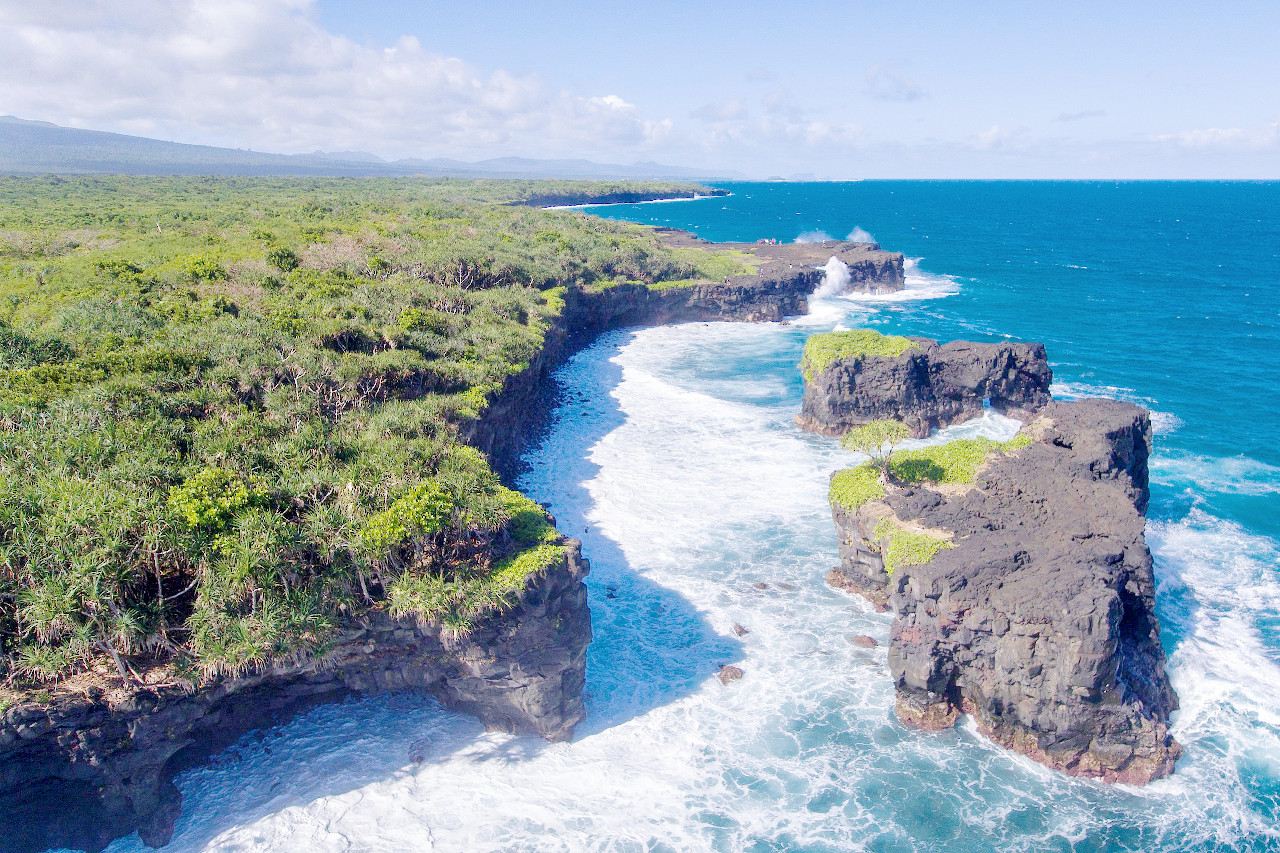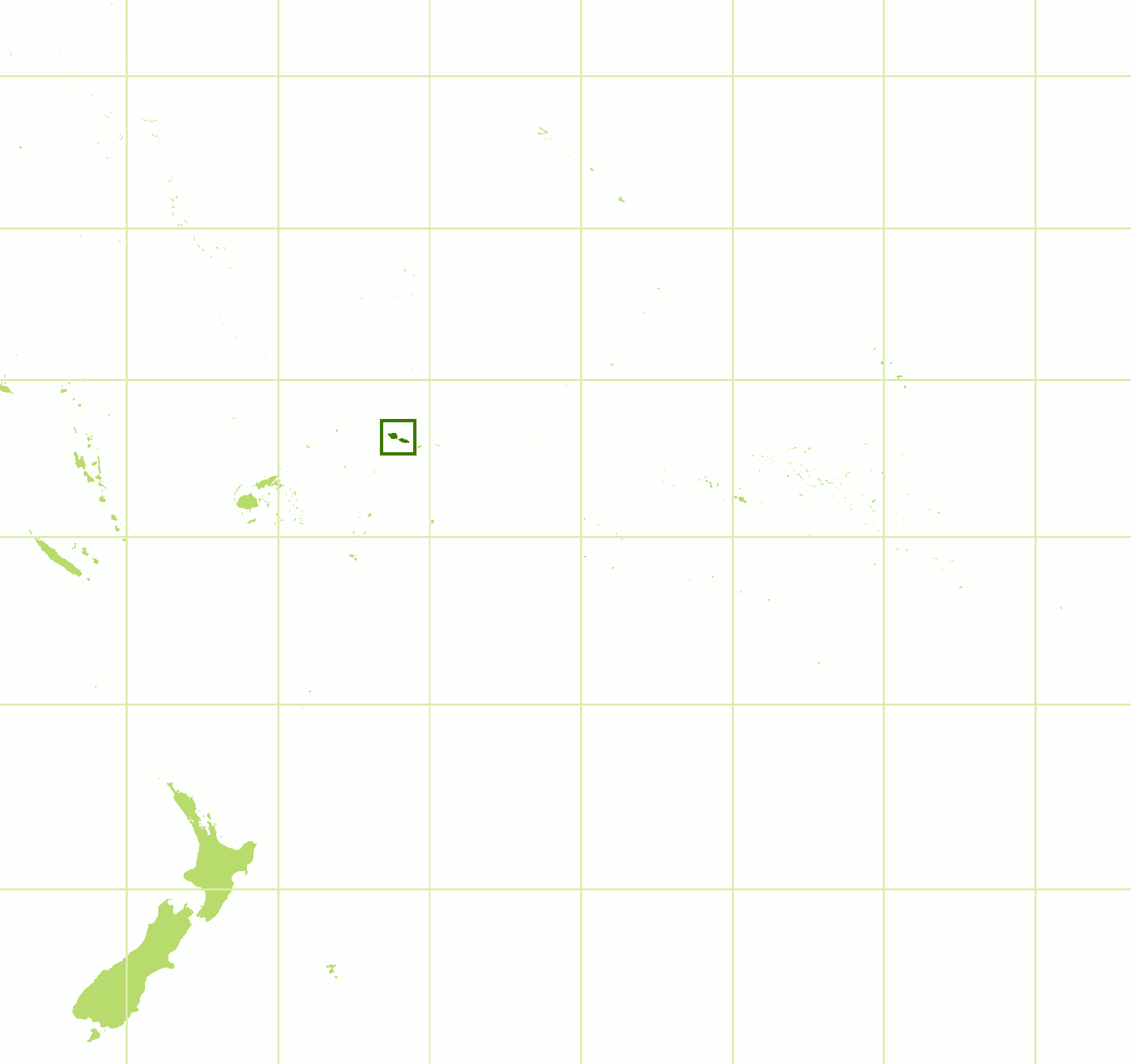The Climate of
Samoa
 Aerial view of the O Le Pupu Pue National Park
Aerial view of the O Le Pupu Pue National Park
What is the climate of Samoa like?
Samoa is located almost centrally in the Polynesian region of the South Pacific. It comprises two volcanic islands, rising to more than 1,800 meters (5,850 feet), and seven smaller islands. The islands of American Samoa are immediately to the east.
Samoa has a tropical marine climate, and very similar conditions prevail throughout the year, with high temperatures and humidity. The mean daily temperature is about 27°C (81°F) year-round. Due to the oceanic surroundings, the daily range of temperature is quite small—about 4°C/10°F. The hottest month is December and the coolest is July.
There is abundant rainfall. Rainfall averages around 3,000 millimeters (120 inches) annually. Being south of the equator, Samoa has its season of maximum rainfall between November and April. Because the interior of the islands is mountainous, there is also a considerable difference between the rainfall on the coast and that of the inland jungle. Average annual rainfall varies from 5,000 to 7,000 millimeters (200 to 280 inches) on the southern windward side to 2,500 to 3,000 millimeters (100 to 120 inches) on the leeward side. Tropical cyclones are less frequent than in the Pacific north of the equator. Trade winds from the southeast are fairly constant throughout the dry season.
Except in the wettest places, where cloud is more frequent, the country has moderately large amounts of sunshine, averaging from six to eight hours a day. Much of the rainfall comes in short, heavy showers, often after a sunny morning, but longer periods of heavy rain lasting a day or so occur in the wetter months.
Apia, the capital of Samoa, shows weather that is typical of the country.
| Climate data for Apia (1971–2000) | |||||||||||||
|---|---|---|---|---|---|---|---|---|---|---|---|---|---|
| Month | Jan | Feb | Mar | Apr | May | Jun | Jul | Aug | Sep | Oct | Nov | Dec | Year |
| Average high °C (°F) | 30.4 (86.7) | 30.6 (87.1) | 30.6 (87.1) | 30.7 (87.3) | 30.4 (86.7) | 30.0 (86.0) | 29.5 (85.1) | 29.6 (85.3) | 29.9 (85.8) | 30.1 (86.2) | 30.3 (86.5) | 30.5 (86.9) | 30.2 (86.4) |
| Daily mean °C (°F) | 27.1 (80.8) | 27.4 (81.3) | 27.3 (81.1) | 27.2 (81.0) | 26.9 (80.4) | 26.6 (79.9) | 26.1 (79.0) | 26.2 (79.2) | 26.5 (79.7) | 26.8 (80.2) | 26.9 (80.4) | 27.2 (81.0) | 26.9 (80.4) |
| Average low °C (°F) | 23.9 (75.0) | 24.2 (75.6) | 24.0 (75.2) | 23.8 (74.8) | 23.4 (74.1) | 23.2 (73.8) | 22.6 (72.7) | 22.8 (73.0) | 23.1 (73.6) | 23.4 (74.1) | 23.6 (74.5) | 23.8 (74.8) | 23.5 (74.3) |
| Average precipitation mm (inches) | 489.0 (19.25) | 368.0 (14.49) | 352.1 (13.86) | 211.2 (8.31) | 192.6 (7.58) | 120.8 (4.76) | 120.7 (4.75) | 113.2 (4.46) | 153.9 (6.06) | 224.3 (8.83) | 261.7 (10.30) | 357.5 (14.07) | 2,965 (116.73) |
| Source: World Meteorological Organization | |||||||||||||
References
- E. A. Pearce, Charles Gordon Smith, (1990) The Hutchinson World Weather Guide, John Murray Press. ISBN 1859863426
- Timothy L. Gall, (ed.), (2003), Worldmark Encyclopedia of the Nations, Eleventh Edition, Thomson Gale
- Hugh Chisholm, (ed.), (1911), Encyclopædia Britannica, Eleventh edition, Cambridge University Press
The Climate of
Samoa

In summary:
The climate of Samoa is tropical, but because of the oceanic surroundings, temperature ranges are not considerable. The mean daily temperature is about 27°C (81°F).
The year is divided into a dry season (May to October) and a wet season (November to April). Rainfall averages 2900 mm (115 in) annually. Trade winds from the southeast are fairly constant throughout the dry season.